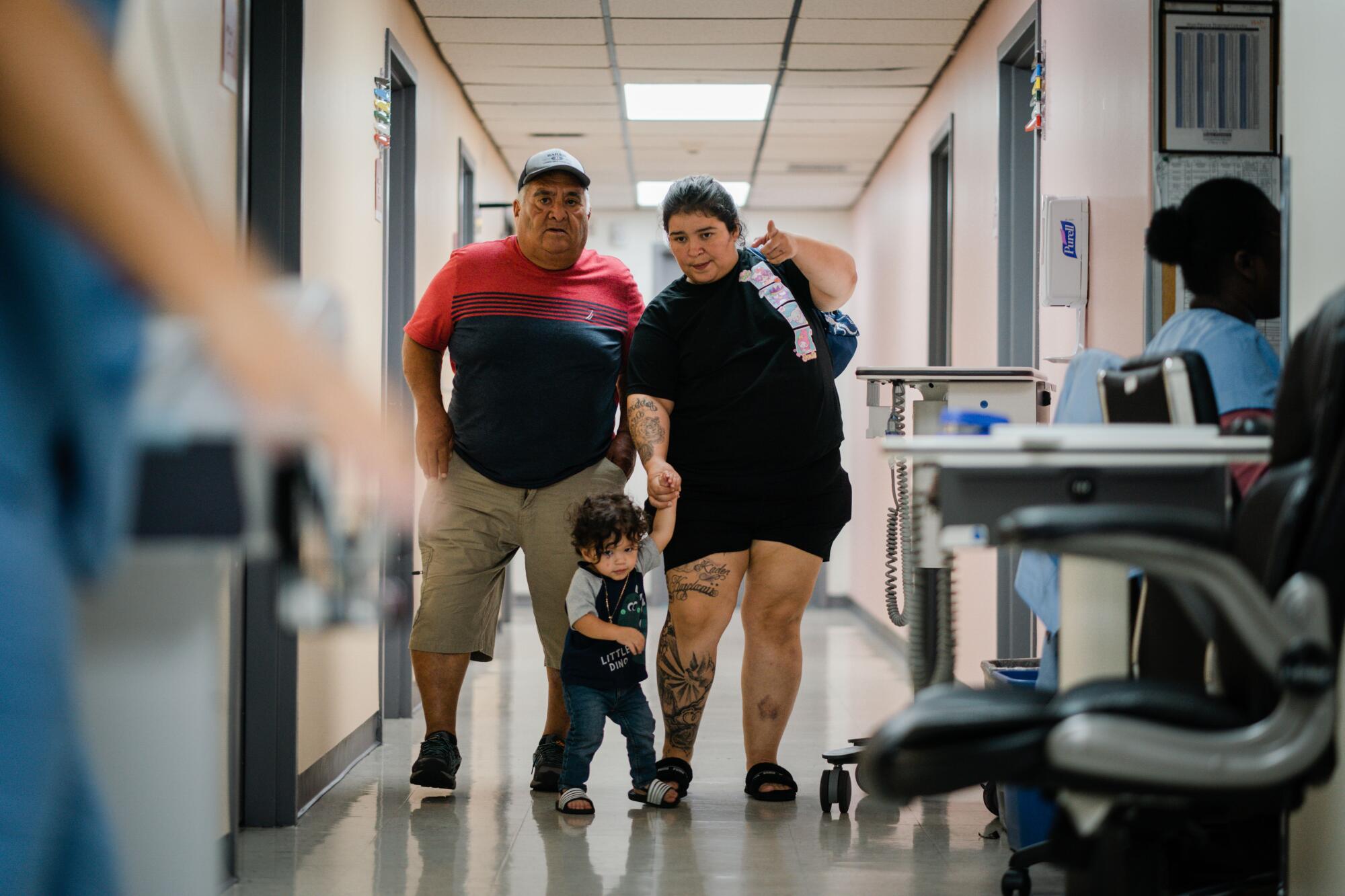
- Share via
CUTLER BAY, Fla. — Policarpo Landaverde’s series of bad breaks seemed to peak about a decade ago when he was shot in the stomach after confronting a man who stole his license plate.
But on a recent afternoon, as he struggled to explain a cascading list of ailments to a nurse, he was dealing with a more fundamental crisis: He lives in Florida, one of the hardest places in the country for poor adults to obtain health insurance.
“Basically, you really got to be homeless,” said his daughter Crystal Landaverde, who took a day off from her job to help him. “You really got to be borderline, about to lose it all, for them to really help you.”
During the pandemic, the federal government expanded access to healthcare by offering states more money to fund their Medicaid programs and blocking them from dropping people from the rolls. But millions of Americans, including an estimated 2.6 million Californians, are likely to lose health coverage this year as that emergency relief expires.
California and many other states are working to limit the damage by expanding access to healthcare for low-income people and connecting more people to subsidized insurance. Florida, on the other hand, is one of a dwindling number of states that continue to reject federal Obamacare money to insure more low-income residents under Medicaid.
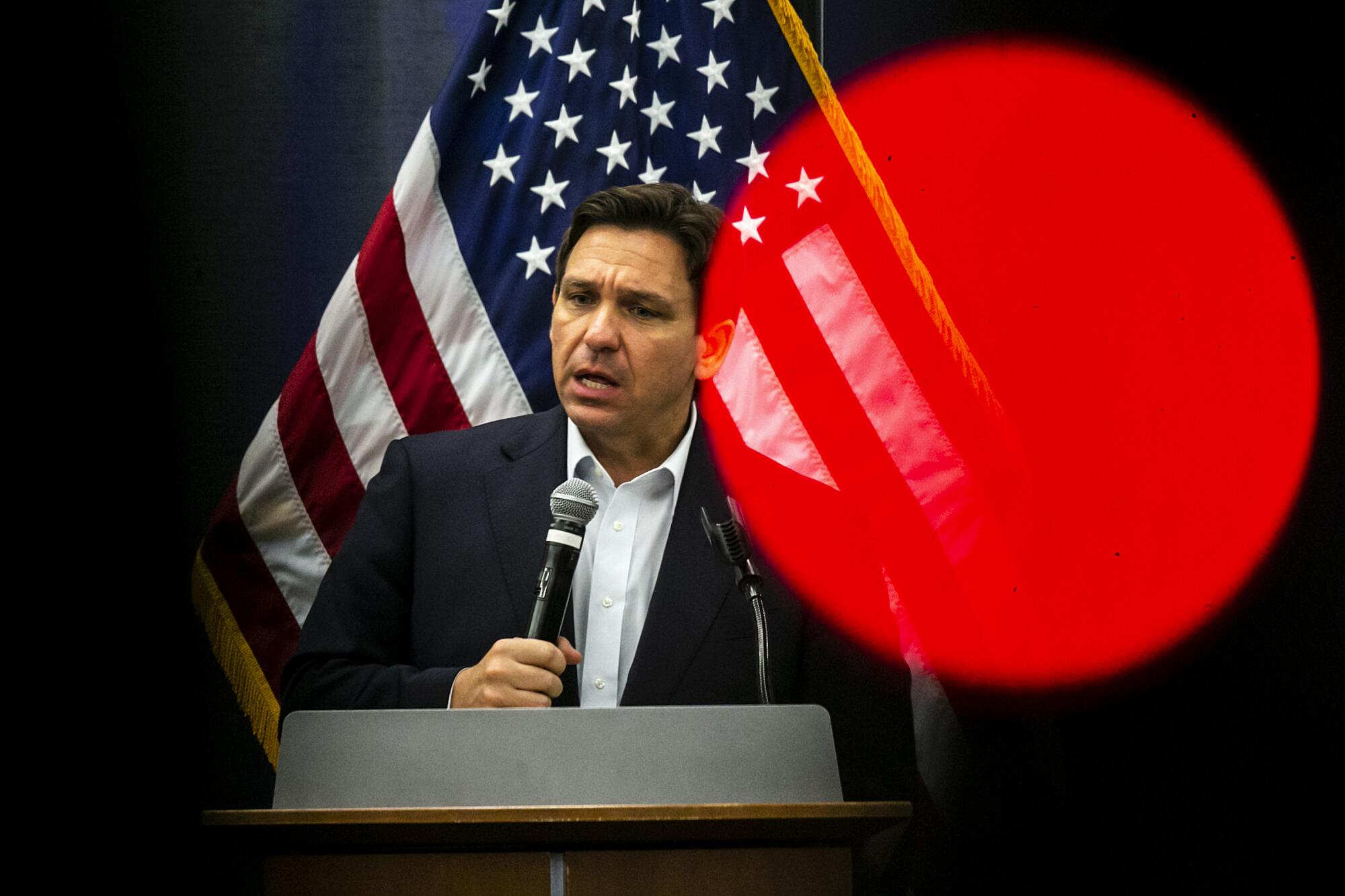
Florida Gov. Ron DeSantis, who has promised to “make America Florida,” filed Wednesday to run for the Republican presidential nomination. He is best-known nationally for his opposition to pandemic-era vaccine mandates and school closures and his efforts to restrict the teaching of gender identity and systemic racism in schools.
But with the state Legislature, DeSantis has also continued a long Florida GOP tradition of blocking the expansion of insurance coverage. As a result, Florida has one of the highest rates of uninsured residents in the country.
The state is one of just 10 that have not signed onto Medicaid expansion, a provision of the 2010 Obamacare law that became optional because of a 2012 Supreme Court ruling. North Carolina, which has a Republican-led Legislature and Democratic governor, became the most recent state to approve expansion in March. Voters in South Dakota, where Republicans outnumber Democrats 2 to 1, approved a ballot measure in November that will implement the expansion starting in July.
California, under full Democratic control, expanded Medi-Cal, the state’s version of Medicaid, in 2014 and has broadened it further in the decade since. In January, the state will allow undocumented immigrants of all ages to qualify for Medi-Cal if they meet income requirements.
The result of California’s and Florida’s policy choices is that the same person who would easily qualify for insurance in Riverside might find themselves uninsured in Orlando. Without proper coverage, many Floridians depend on a patchwork of services that often drive up costs to taxpayers and leave patients with crippling debt, undertreated illnesses or both.
Landaverde, 63, was one of dozens of people who had appointments and walk-in visits on a recent Friday at the Doris Ison Health Center in Cutler Bay, a suburb about 40 minutes south of Miami and within driving distance of some of the state’s poorest farming communities.
No state has had a bigger impact on the direction of the United States than California, a prolific incubator and exporter of outside-the-box policies and ideas. This occasional series examines what that has meant for the state and the country, and how far Washington is willing to go to spread California’s agenda as the state’s own struggles threaten its standing as the nation’s think tank.
They waited in rows of plastic chairs under cavernous flag-draped ceilings to see dentists, pediatricians, obstetricians, family practitioners and behavioral health specialists or to get urgent care treatment, prescriptions and X-rays. Many had cut-rate plans but nearly half were entirely uninsured, and would be asked to pay out of pocket on a sliding scale. The health center, which relies on federal, state and private grants, lacks specialists for patients dealing with heart disease, cancer, AIDS and other serious illnesses.
Landaverde has been applying for Medicaid since he was shot, but has failed to qualify, his daughter said. Adults without young children in Florida don’t qualify for the program and even a family of four would have to earn less than $8,400 a year.
The damage to Landaverde’s stomach limits his ability to bend over, and the former laborer, a legal resident who emigrated from Mexico decades ago, has been unable to hold down a full-time job, his daughter said.
Since the shooting, he has dealt with preventable illnesses such as shingles, and catastrophic ailments, including congestive heart failure two months ago that put him in the emergency room at the public hospital, where his unpaid bills will likely be picked up by taxpayers. Congestive heart failure is often preventable with appropriate care, including diet counseling and drugs to treat underlying causes, such as high blood pressure.
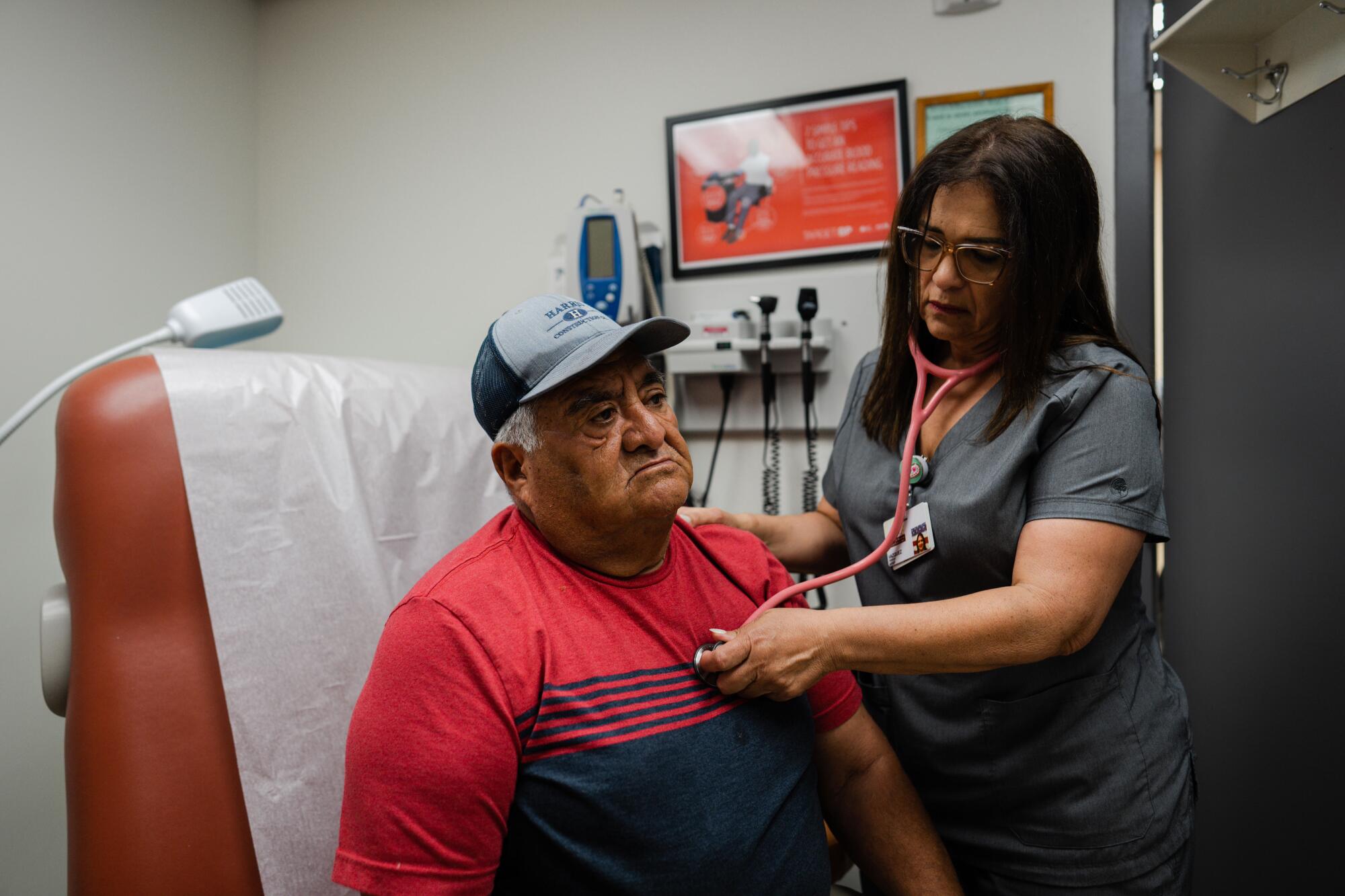
Landaverde scrapes together more than $100 a month for his growing list of medications using his Social Security payments, his wife’s minimum-wage salary as a janitor and help from family members who are also struggling to pay rent and provide food for their families. At the health center, a nurse practitioner, Teresa Vazquez, told his daughter about a card that allows low-income people who have no insurance to see a cardiologist at the county’s public hospital, something he has not been able to do since his discharge from the emergency room.
“It could take three months. It could take six months,” Vazquez warned Landaverde and his daughter.
But first, the family needed to begin another application process and qualify for the county hospital’s assistance program, which charges fees on a sliding scale. In the meantime, the father and daughter needed to send Vazquez a list of prescriptions so she could manage his care, she said.
Crystal Landaverde told Vazquez that her family had additional concerns about her father. He had psoriasis and was also forgetting things, burning his food while trying to cook.
“Oh wow,” Vazquez said. “He’s been through a lot.”
Vazquez said he could seek additional referrals if he qualifies. But again, he would need to wait, and hope.
Vazquez has been working at Doris Ison for a decade and has seen few changes in her patients’ ability to access care, even as the 2010 Obamacare law began taking effect, she said. The line for specialists who treat indigent patients continues to grow. She has little doubt Landaverde’s ailments could have been prevented, or at least better contained, if he had access to preventive care.

“It’s really painful for me that there has to be access based on your location, based on your state,” said Dr. Saint Anthony Amofah, executive vice president and chief medical officer for Community Health of South Florida, a group that includes Doris Ison along with 12 other facilities and a pair of medical vans. “This is not right.”
Amofah believes the end of emergency Medicaid will hit Florida harder because fewer patients will find a way to get back on the insurance rolls. States that have not expanded Medicaid have more stringent requirements, meaning their residents are at higher risk of losing coverage as pandemic aid expires.
Many of Amofah’s patients are worried their access to specialists will be cut off or their co-pays will go up, even if they manage to find private insurance, he said.
“Coming here, we’ll still see them,” he said. “But some of these specialists will not. Some of these hospitals will send them huge bills.”
Veronica Saravia knows what life is like without Medicaid and would do anything to avoid losing it. The 64-year-old was an uninsured single mother holding down two jobs in 2016 when she was hospitalized with a TIA, often known as a mini-stroke, she said. Her prescription ran out and, without follow-up care, she failed to renew it, which led to a full-blown stroke just weeks after her initial visit.
“I don’t know what would have happened if I took my medication regularly,” said Saravia, who has since enrolled in Medicaid.
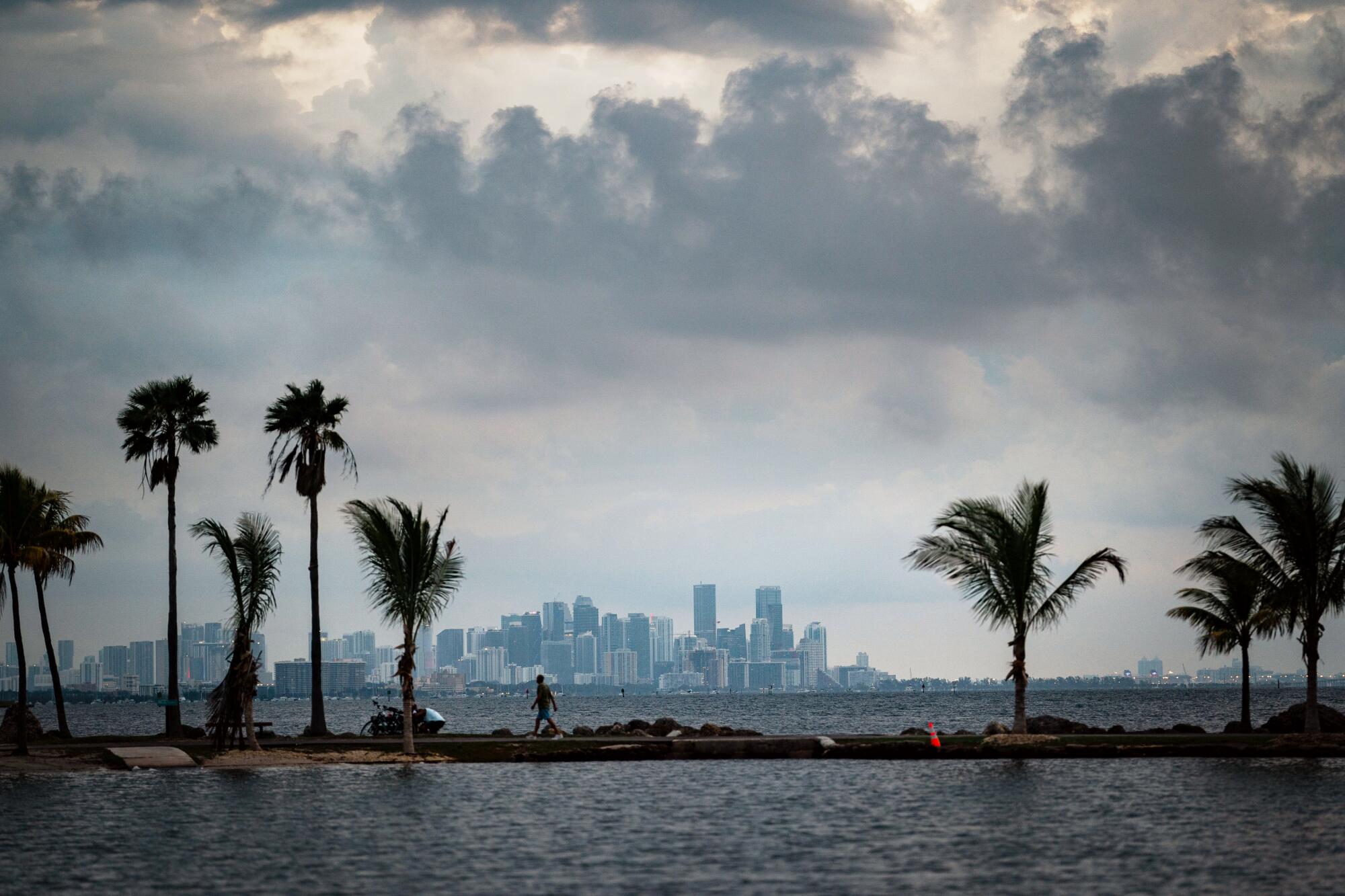
Florida’s rate of uninsured people under 65 is 15.1%, according to the latest data from 2021, the third highest rate after Oklahoma and Texas. That is an improvement since 2010, the year Obamacare was signed, when the rate was 26%. The state has led the nation in signing people up for private subsidized insurance through the Obamacare exchange, largely through the efforts of private brokers and federal recruitment programs.
But many of these cheaper Obamacare plans are less desirable than Medicaid for the low-income people who qualify because they often come with high deductibles.
And the world around Florida has shifted. California, where 21% of people under 65 were uninsured before Obamacare, got that number down to 8.1% by 2021. Recent changes to offer Medi-Cal to low-income undocumented immigrants are likely to shrink that number further, adding an estimated 1.3 million people to the insurance rolls.
Expanding health insurance coverage isn’t cheap. Medi-Cal’s budget is $137 billion and is likely to cost an additional $2 billion as the largest group of undocumented immigrants — those aged 26 through 49 — becomes eligible for benefits over the next several years. Health costs are helping to drive a $31.5-billion state budget deficit, prompting Gov. Gavin Newsom to propose closing it in part through reserves and a tax on managed care programs.
California also spends slightly more than Florida on a per-person basis — $10,299 compared with $9,865, according to a Kaiser Family Foundation analysis of combined private and public healthcare spending in 2020.
But the federal government covers 90% of Medicaid expansion costs for American citizens and residents, meaning most states bear a much smaller burden. And President Biden signed a law in 2021 providing an extra incentive for states to sign onto expansion — covering an additional 5% of the costs for the first two years, one of several measures designed to bolster the nation’s insurance rolls.
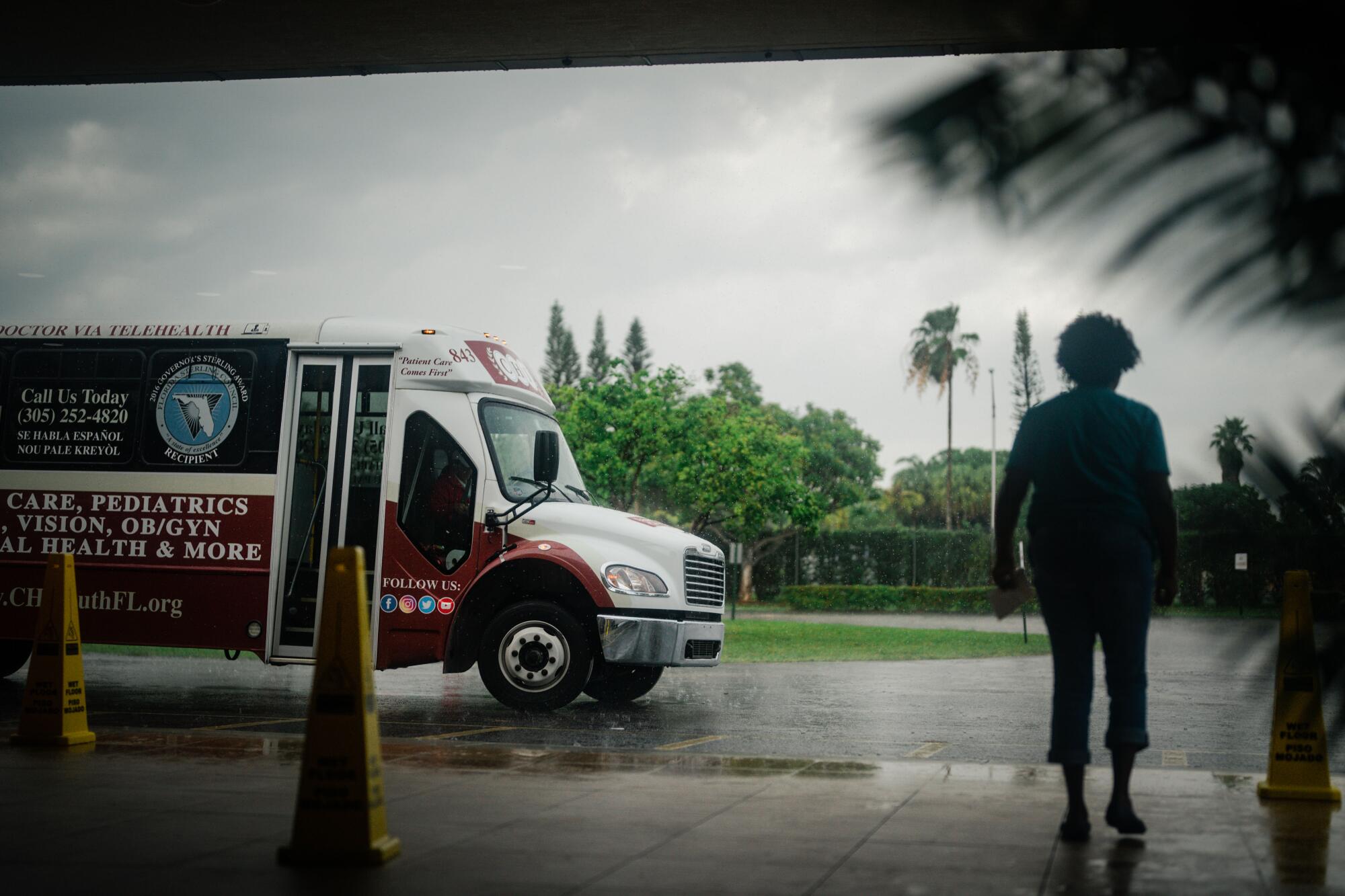
That new money has not swayed DeSantis, who made his reputation in Congress as an avid opponent of Obamacare before becoming governor. In 2017, he opposed a Republican plan to end the law because it did not go far enough, leaving, he said, “the core architecture of Obamacare in place.”
He has spoken less about the issue since becoming governor. In his recent memoir, “The Courage to Be Free,” DeSantis mentioned Obamacare in passing; almost all of his healthcare references related to his opposition to vaccine requirements, school closures and other pandemic restrictions. The governor signed a series of “medical freedom” bills this month that prevent businesses, employers, schools and other government entities from requiring COVID-19 testing, masks or vaccinations.
A spokesperson for Florida’s Agency for Health Care Administration, who responded to questions on behalf of DeSantis, pointed to studies showing that states with increased access to medical care for lower-income residents through Medicaid also experienced longer wait times to see doctors.
“In Florida, Medicaid is a true safety net program focused on low-income children, parents, pregnant women and elderly, as well as disabled individuals,” said Bailey Smith, the spokesperson, in an email.
Smith pointed to Florida’s robust program for children, which offers a variety of lower-cost plans depending on income level, and to its 2021 decision to extend Medicaid coverage to new mothers for a year after they give birth. Smith said the state is concerned that federal matching money for expanding Medicaid programs for other adults may not last, and that “Florida’s costs for expanded Medicaid could skyrocket from $500 million to over $2 billion” over time.
The state Legislature passed a measure this month to expand eligibility for children’s health insurance programs by an estimated 18,575 children, something advocates have applauded. Proponents for the uninsured are hoping to get a statewide initiative to expand Medicaid for adults on the ballot in 2026.
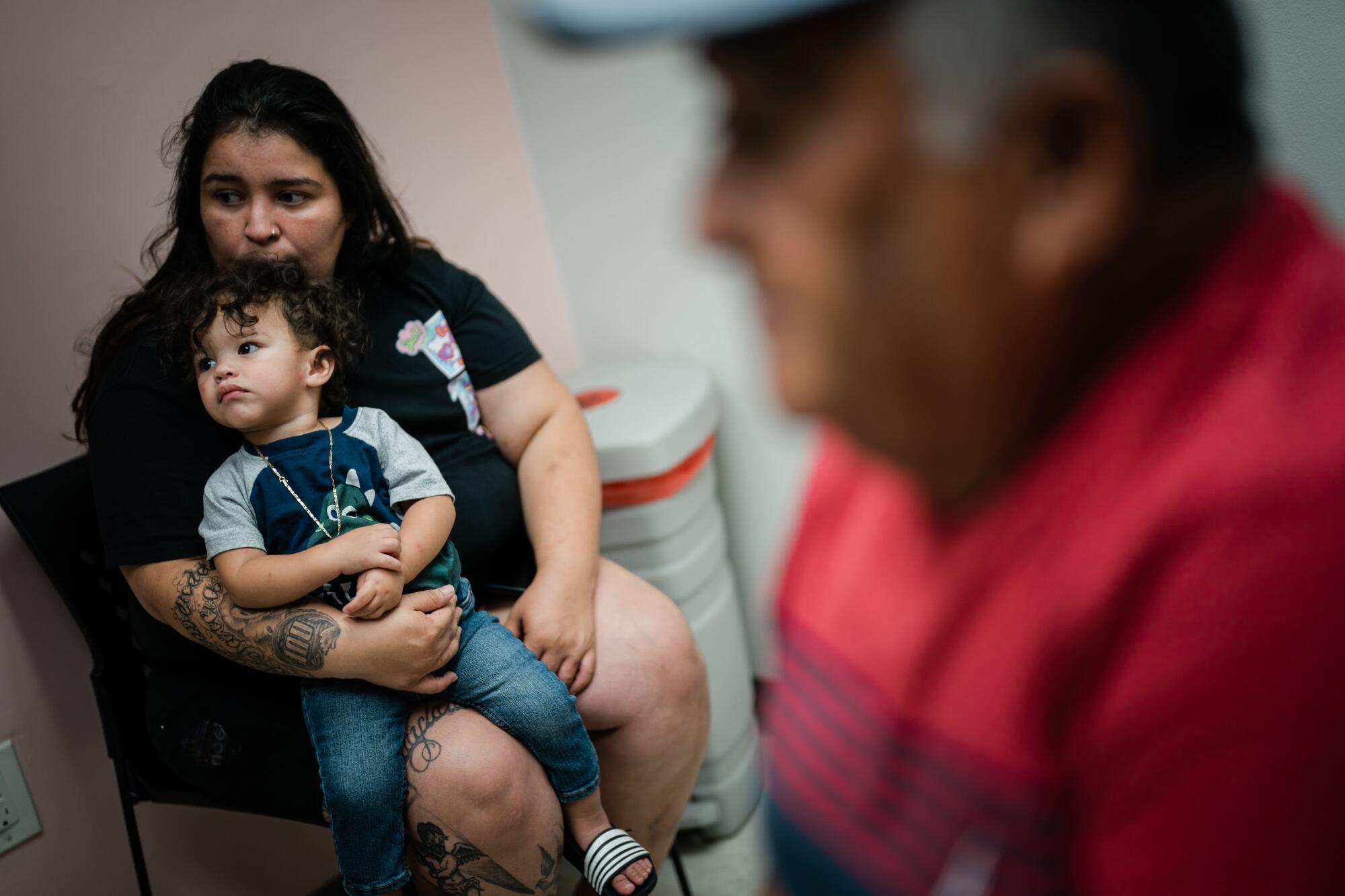
As Landaverde and his daughter wrapped up their visit in the Cutler Bay exam room, Vazquez offered Policarpo Landaverde a flu vaccine, the type of preventive measure that could save thousands of dollars if it keeps him out of the hospital.
He agreed at first. Then Vazquez mentioned the cost.
“It’s $65, though,” she said.
The daughter and father looked at each other and laughed.
Vazquez knew they had changed their minds. OK, she told them, nodding in sympathy. Maybe next time.
More to Read
Sign up for This Evening's Big Stories
Catch up on the day with the 7 biggest L.A. Times stories in your inbox every weekday evening.
You may occasionally receive promotional content from the Los Angeles Times.













